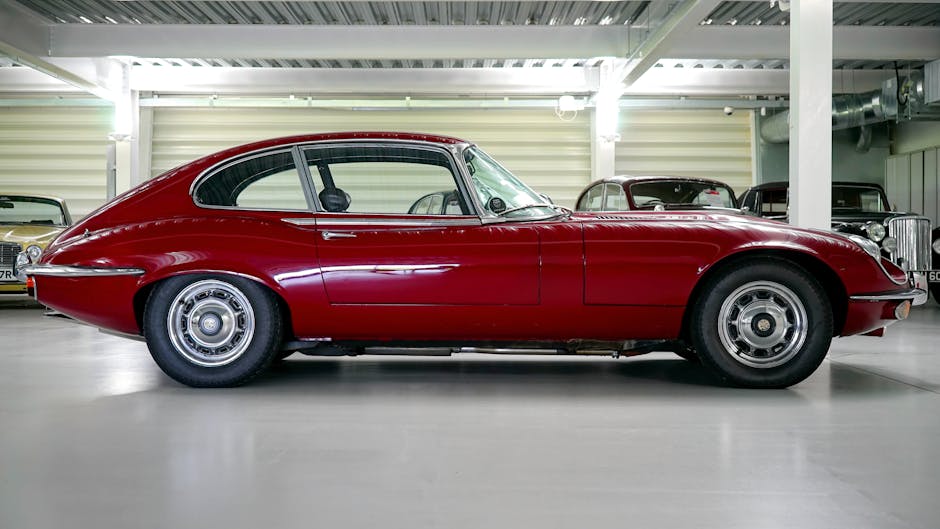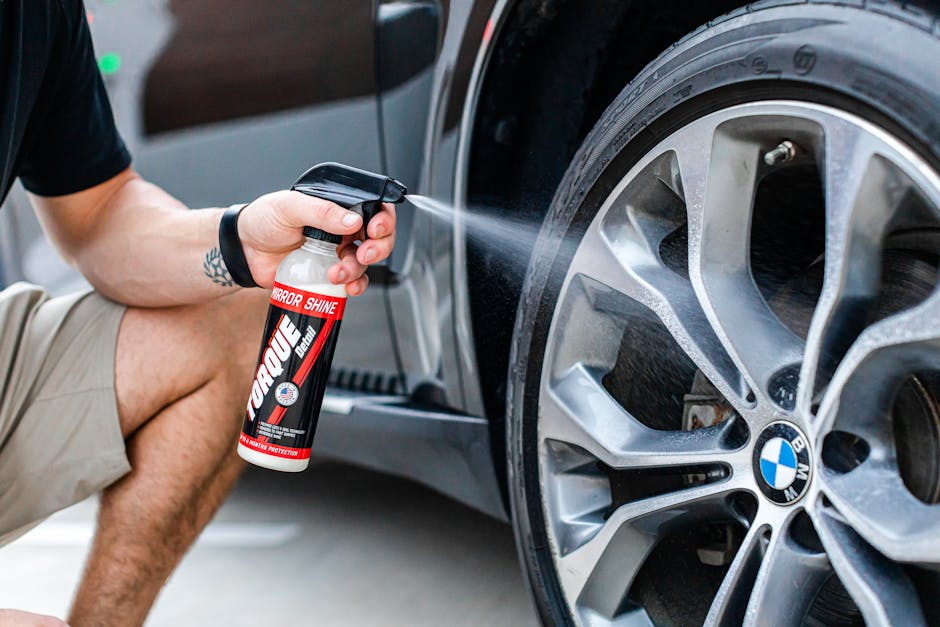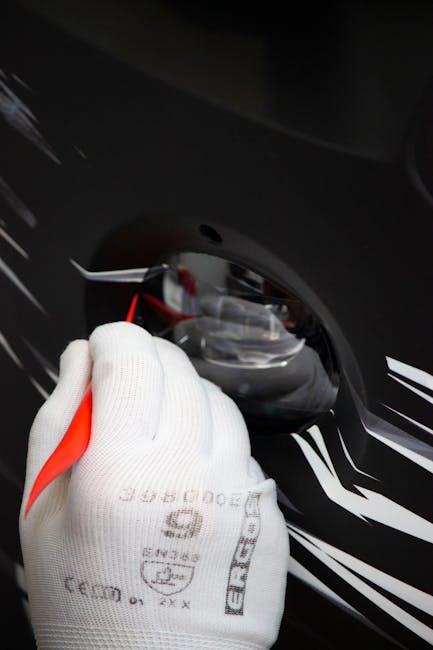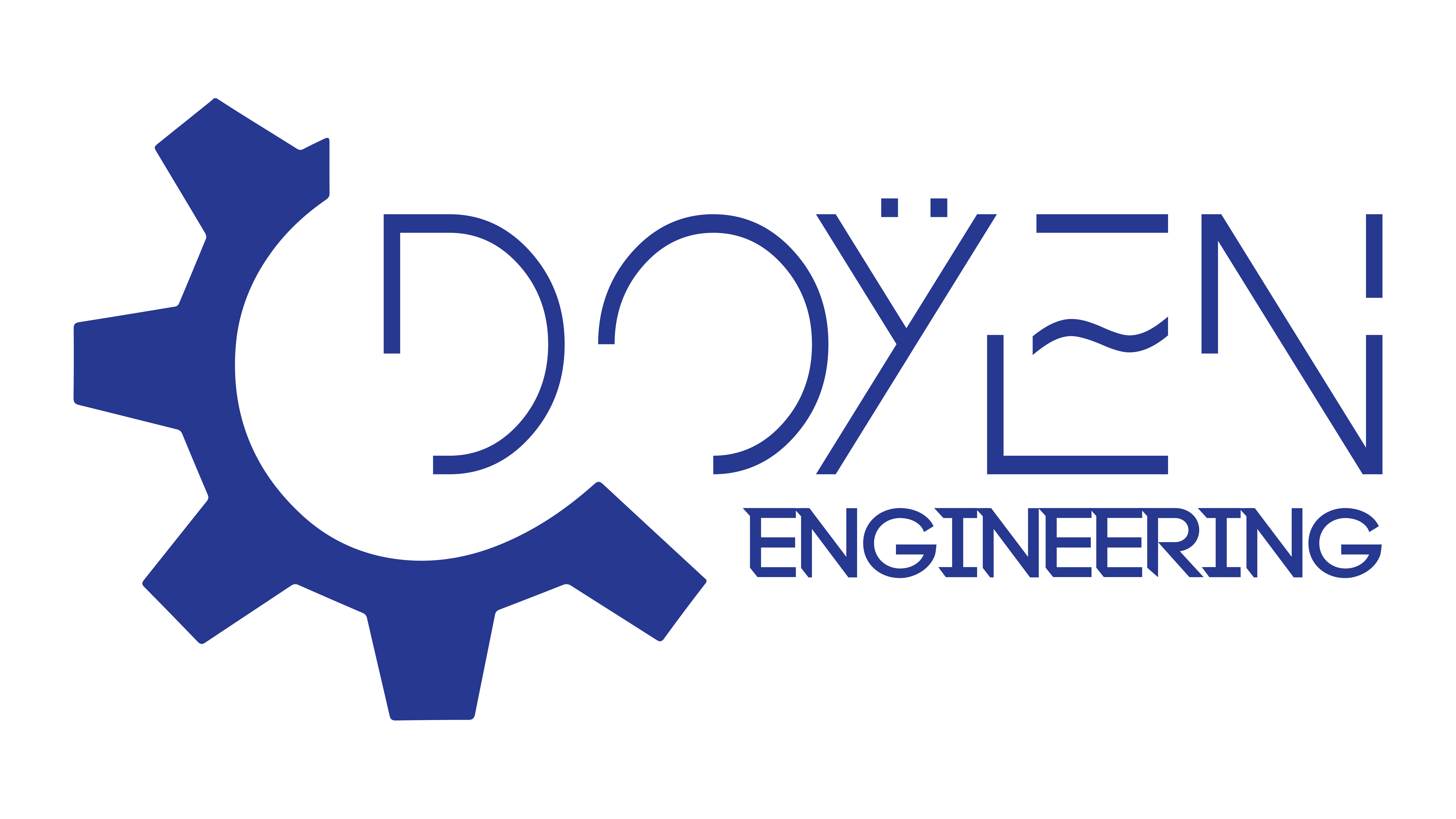
Introduction
Importance of Selecting the Right Motor
Selecting the right motor is crucial for the efficiency and effectiveness of any application, whether it's for industrial machinery or household appliances. A well-chosen motor optimizes performance, reduces operational costs, and can significantly impact productivity. For example, a plant manager once shared how switching to a more efficient motor saved the company 20% in energy costs within a year.
Factors to Consider When Choosing a Motor
When choosing a motor, several factors must be taken into account:
- Type of Motor: Is it AC or DC?
- Power Requirements: What are the torque and speed needs?
- Environmental Conditions: Will it operate in harsh conditions?
- Size and Mounting: What are the spatial constraints?
- Budget: How will initial costs weigh against long-term expenses?
- Performance: Does it offer speed control and overload capacity?
By carefully evaluating these considerations, you can ensure successful operation and longevity of your motor selection.

Understanding Motor Types
AC Motors
AC motors, or alternating current motors, are widely used in various applications due to their efficiency and ease of use. One significant advantage is their ability to run on standard electrical sources, which makes them ideal for residential and industrial settings. For instance, in a factory I once visited, the team leveraged AC motors to power conveyor belts, ensuring smooth operation and minimizing maintenance. Key characteristics of AC motors include:
- Types: Induction and synchronous
- Speed: Generally fixed and dependent on the supply frequency
- Cost: Typically lower initial investment
- Durability: Robust and suitable for continuous operations
DC Motors
On the other hand, DC motors offer unique benefits, especially when variable speed control is essential. They run on direct current and are often found in applications like electric vehicles and robotics. I remember a colleague's project involving a prototype robot; the DC motor allowed for seamless speed adjustments, which were critical for maneuverability.Some defining features of DC motors include:
- Types: Brushed and brushless
- Speed: Highly variable, easily adjustable
- Control: More straightforward control of speed and torque
- Maintenance: Brush types require more maintenance than brushless
Both AC and DC motors have their places in different applications, and understanding these types can greatly contribute to successful motor selection.

Power Requirements Analysis
Torque and Speed Requirements
Understanding torque and speed requirements is essential when selecting a motor. Torque refers to the rotational force produced by the motor, while speed is how fast that rotation occurs. For example, when my friend was building a custom electric bicycle, choosing a motor with the right torque helped ensure it could climb steep hills efficiently. Key considerations for torque and speed include:
- Load Characteristics: Analyzing what the motor will be driving
- Application Needs: Considering if high torque or speed is prioritized
- Starting Torque: Ensuring the motor can handle immediate load demands
- Speed Range: Assessing the operational limits needed for the task
Determining these factors early can prevent potential inefficiencies and ensure optimal performance.
Efficiency and Power Output
Efficiency and power output are crucial metrics that directly impact operational costs and performance. Higher efficiency means less energy wasted, which is particularly important in applications running continuously, like an HVAC system I once worked on. It was enlightening to see how a switch to a more efficient motor reduced energy costs significantly.Here are some aspects to evaluate regarding efficiency and power output:
- Efficiency Ratings: Look for motors with high efficiency percentages
- Load Factor: Match motor size to the load requirements for best efficiency
- Power Output: Ensure the motor can meet the required power demands without overheating
Analyzing these power requirements ensures that you choose a motor that not only meets your operational needs but also maximizes energy savings and reliability.

Environmental Considerations
Temperature and Humidity
When selecting a motor, it's vital to consider the environmental conditions it will operate in, particularly temperature and humidity. Many industrial settings can present harsh environments that can significantly affect motor performance. For instance, during a factory audit I conducted, we discovered that motors running in areas with high humidity were prone to rust and quicker degradation. Key points to consider:
- Operating Temperatures: Ensure the motor can handle the maximum ambient temperatures.
- Humidity Levels: High humidity may require corrosion-resistant materials.
- Thermal Runaway: Be mindful of cooling mechanisms to prevent overheating.
Addressing these environmental factors can prolong the lifespan of the motor and enhance reliability.
Enclosure Protection Ratings
Enclosure protection ratings, often indicated by the IP (Ingress Protection) code, provide important information on how well a motor can withstand environmental challenges. A good example comes from a marine application I observed, where IP-rated motors were essential for avoiding saltwater damage.Consider the following ratings:
- IP65: Dust-tight and protected against water jets.
- IP67: Dust-tight and can withstand temporary immersion in water.
- IP68: Dust-tight and suitable for continuous immersion.
Choosing the right enclosure rating ensures that your motor can endure its operational environment, reducing the risk of damage from dust, water, or other pollutants. This thoughtfulness contributes to sustained performance and decreases maintenance needs over time.

Size and Mounting Constraints
Physical Dimensions
When it comes to motor selection, understanding the physical dimensions is crucial. A motor that doesn’t fit in the designated space can lead to project delays and additional costs. I recall a project where my team had to redesign an equipment layout because the selected motor was larger than anticipated, underscoring the importance of thorough planning.Key aspects to evaluate include:
- Length, Width, and Height: Measure the available installation space accurately.
- Weight: Ensure the mounting surface can support the motor's weight.
- Clearance Requirements: Allow for ventilation and maintenance access.
Taking these dimensions into account will help ensure a smooth integration into the existing system.
Mounting Options
Mounting options vary widely and can significantly impact how a motor performs. Different applications require unique mounting methods, and I remember a scenario in a manufacturing plant where improper mounting led to excessive vibrations, affecting overall efficiency.Consider these mounting options:
- Foot-mounted: Commonly used for stationary applications.
- Flange-mounted: Useful for rigid setups and often found in conveyors.
- Face-mounted: Great for space-saving installations when dealing with compact areas.
Choosing the right mounting option will ensure stability and reduce the likelihood of operational issues, making it an essential factor in the motor selection process. By carefully considering size and mounting constraints, you set the foundation for a successful motor implementation.

Budget Planning
Initial Cost vs. Long-Term Expenses
When planning your budget for motor selection, it’s essential to weigh the initial costs against long-term expenses. I once worked on a project where the temptation to go with the cheapest motor led to higher operational costs later due to inefficiency. Here are some points to consider:
- Upfront Investment: Evaluate the price of the motor and installation.
- Energy Consumption: Assess the operational efficiency to predict utility costs.
- Lifespan: Calculate how long the motor is expected to last to determine overall investment value.
Understanding both the initial and ongoing costs can help avoid budget overruns and ensure a wise financial decision.
Cost of Maintenance and Repairs
Maintenance and repair costs can add up significantly over time, which is why planning for them is crucial. I remember a facility manager sharing how routine maintenance caught small issues before they turned into costly repairs. Several factors influence maintenance costs:
- Frequency of Maintenance: Regular servicing can minimize unexpected breakdowns.
- Parts Availability: Selecting motors with readily available parts can save on repair times.
- Repair Complexity: More intricate designs may necessitate specialized technicians, driving up costs.
By accurately estimating maintenance and repair costs, businesses can achieve greater financial stability and prolong the operational life of their motors. Proper budget planning not only ensures that the right motor is selected but also that the long-term financial implications are clear.

Performance Evaluation
Motor Speed Control
Evaluating motor performance also involves understanding speed control capabilities. The ability to adjust speed not only enhances efficiency but also allows for better adaptability in various applications. I once saw a packaging line drastically improve productivity by implementing variable speed motors, which provided flexibility to adapt to different product sizes.Key points to consider regarding motor speed control are:
- Types of Speed Control: Options include variable frequency drives (VFDs) and servo motors.
- Precision: Assess how accurately the motor can adjust to desired speeds.
- Response Time: Evaluate how quickly the motor can change speeds when needed.
Proper speed control can lead to improved efficiency, waste reduction, and enhanced overall performance.
Overload Capacity
Another critical aspect of performance evaluation is the motor's overload capacity. This feature determines how much extra load a motor can handle before it risks damage. In one instance, a manufacturing facility experienced operational interruptions because they frequently operated the motors near their maximum capacity without understanding their limits.Consider these factors for overload capacity:
- Service Factor: A higher service factor often indicates greater overload capability.
- Thermal Overload Protection: Ensures the motor can withstand temporary overloads without damage.
- Application Requirements: Assess if the motor needs to handle unexpected surges in load.
By thoroughly evaluating these performance aspects, businesses can ensure they select motors that not only meet their operational needs but also provide reliability and durability, ultimately enhancing productivity and reducing downtime.

Compatibility with Control Systems
Integration with PLCs
When selecting a motor, compatibility with control systems is paramount, especially regarding integration with Programmable Logic Controllers (PLCs). PLCs are widely used in industrial automation, and I remember a project where seamless PLC integration significantly streamlined the operation of a production line. The efficiency gained from this connection was remarkable.Key considerations for PLC integration include:
- Input and Output Requirements: Ensure that the motor's control signals align with the PLC’s output specifications.
- Feedback Mechanisms: Implement encoders or sensors for precise motor control and monitoring.
- Ease of Programming: Choose motors with straightforward programming requirements to minimize installation time.
Evaluating these aspects can lead to enhanced control and operational efficiency in automated environments.
Communication Protocols
In addition to PLC integration, understanding communication protocols is critical for successful motor operation within a control system. Different protocols can dictate how devices share information, influencing overall performance. For instance, I once worked on an automation project where integrating a motor using the Modbus protocol improved data transfer speed and reliability.Consider these common communication protocols:
- Modbus: Simple and widely used for industrial devices.
- CANopen: Ideal for embedded applications with robust requirements.
- EtherCAT: Known for high-speed communication in real-time systems.
Ensuring that the motor aligns with the chosen communication protocol can bridge the gap between various system components, facilitating effective monitoring and control. By focusing on compatibility with control systems, businesses can optimize their motor selection, leading to smoother operations and enhanced performance overall.

Energy Efficiency Standards
Energy Star Ratings
Energy efficiency is not just a trend—it's a crucial aspect of motor selection that can lead to significant cost savings. One way to gauge this efficiency is through Energy Star ratings, which indicate products that meet strict energy-efficiency guidelines set by the EPA. In a building renovation project I was involved in, choosing Energy Star-rated motors resulted in a 15% reduction in energy consumption, making the decision not only environmentally friendly but also economically beneficial.Here are key points about Energy Star ratings:
- Performance Standards: Motors certified by Energy Star have been tested and proven to consume less energy.
- Environmental Impact: Enhanced efficiency contributes to reduced carbon emissions.
- Incentives: Some regions offer financial incentives for incorporating Energy Star products.
Choosing Energy Star-rated motors is a proactive step toward sustainability and cost savings.
NEMA Premium Efficiency
Another important energy efficiency standard is the NEMA Premium Efficiency designation. This classification signifies motors that exceed standard efficiency levels, providing a greater return on investment over time. When working with a client in the manufacturing sector, we decided to upgrade to NEMA Premium motors; the result was startling savings on monthly energy bills, proving their worth.Consider the benefits of NEMA Premium Efficiency motors:
- Higher Efficiency Ratings: Typically 3% to 8% more efficient than standard motors depending on the class.
- Long-term Cost Savings: Reduced operational costs over the motor's lifespan due to lower energy consumption.
- Enhanced Reliability: Often designed with better materials and construction, leading to fewer breakdowns and maintenance needs.
By adhering to energy efficiency standards like Energy Star ratings and NEMA Premium Efficiency, businesses can not only enhance their operational efficiency but also contribute positively to environmental sustainability. Choosing the right motor with these ratings is a critical step toward optimizing both performance and cost-effectiveness.

Warranty and Support Services
Manufacturer's Warranty
When investing in a motor, understanding the warranty offered by the manufacturer is crucial. A solid warranty provides peace of mind, ensuring that if any defects or issues arise, they’ll be covered. I recall a time when a manufacturing facility I consulted for faced equipment failure shortly after installation. Fortunately, the motor came with a comprehensive warranty, which facilitated a quick resolution without incurring high costs.Points to consider regarding a manufacturer's warranty include:
- Duration: Check how long the warranty lasts—typically ranges from one to three years.
- Coverage: Understand what is covered—replacement parts, labor, or both.
- Claim Process: Familiarize yourself with the warranty claim process to avoid delays if issues arise.
A robust warranty can save significant amounts of money and hassle down the line.
Availability of Technical Support
In addition to warranty coverage, the availability of technical support is essential for maintaining operational efficiency. Technical support can provide critical assistance not only during installation but also for troubleshooting and maintenance. During a project involving an automated assembly line, I witnessed firsthand how accessible technical support helped resolve issues quickly, keeping production running smoothly.Consider the following when assessing technical support:
- Contact Methods: Check if support is available via phone, email, or live chat.
- Response Time: Evaluate the average response time for queries or emergencies.
- Knowledge Base: A comprehensive online resource can provide valuable information for troubleshooting minor issues yourself.
Having reliable technical support alongside a solid warranty ensures that your investment in a motor is protected, allowing for smoother operations and less downtime. By prioritizing these elements, businesses can create a supportive environment for their motor systems, positioning themselves for success.

Case Studies and Examples
Real-World Applications
Examining real-world applications of motors can provide valuable insights into their effectiveness and versatility. One notable example is in the food processing industry, where a company upgraded its motor systems to improve efficiency. By switching to high-efficiency motors, they reduced energy consumption significantly, leading to both cost savings and a lower carbon footprint. Here are some key applications worth noting:
- Water Treatment Plants: Using energy-efficient motors has improved the reliability and efficiency of pumping water while reducing energy costs.
- Fabrication Shops: Implementing variable speed motors allows for precise control over machinery, enhancing product quality while lowering waste.
- Refrigeration Units: High-efficiency motors can boost overall system performance, leading to substantial energy savings in commercial cold storage.
These case studies underscore the importance of careful motor selection in various sectors.
Success Stories
Success stories reflect how effective motor choices can transform operations. For instance, a manufacturer I worked with installed NEMA Premium motors in their assembly line, resulting in a 25% reduction in energy costs within the first year. Consider the following success indicators:
- Cost Savings: Companies often achieve drastic reductions in operational expenses when adopting energy-efficient motors.
- Downtime Reduction: Motors with better reliability and support lead to fewer breakdowns and less downtime.
- Employee Satisfaction: Enhanced efficiency can contribute to faster production timelines, boosting overall employee morale and productivity.
These success stories illustrate how informed motor choices can not only enhance efficiency but also lead to tangible benefits across various sectors. By learning from these examples, businesses can make more strategic decisions when selecting motors for their operations, paving the way for improved performance and profitability.

Installation and Commissioning
Proper Installation Guidelines
Successful installation is crucial for maximizing the performance of any motor. Following proper installation guidelines helps ensure that the motor operates efficiently and lasts longer. In one instance, a colleague overlooked critical alignment requirements during installation, resulting in unnecessary wear and tear on the motor. Here are some essential guidelines to consider:
- Alignment: Ensure that the motor is correctly aligned with the load it drives. Misalignment can lead to vibration and premature failure.
- Mounting: Use appropriate mounting techniques to provide stability and reduce noise. Depending on the application, consider using vibration dampers or brackets for additional support.
- Wiring: Follow manufacturer recommendations for wiring and ensure connections are secure. Faulty wiring can lead to operational issues or hazards.
- Environmental Considerations: Confirm that the installation location meets the motor’s environmental ratings for temperature, humidity, and protection from dust or moisture.
By adhering to these guidelines, the foundation for optimal motor performance is established.
Commissioning Procedures
Once installation is complete, executing proper commissioning procedures is critical to ensure that the motor operates as intended. This phase often reveals any potential issues that must be addressed. I remember when I worked on a project where a thorough commissioning process uncovered unexpected electrical issues that could have led to future failures.Key commissioning procedures to follow include:
- Initial Testing: Conduct a series of tests to verify that all electrical connections and mechanical alignments are correct.
- Performance Measurements: Measure parameters such as voltage, current, speed, and temperature to ensure they align with the manufacturer's specifications.
- Load Testing: Gradually introduce loads to observe how the motor responds under various conditions. This step helps confirm that the motor can handle operational demands.
- Document Findings: Keep detailed records of tests and results. This documentation can serve as a reference for future maintenance or troubleshooting.
By implementing proper commissioning procedures, businesses can ensure that their motor not only meets operational requirements but also contributes positively to overall system efficiency and reliability. With a solid installation and commissioning phase, the investment in the motor pays off through enhanced performance and reduced long-term issues.

Troubleshooting and Maintenance
Common Issues and Solutions
Even with the best motors, issues can arise that require effective troubleshooting. Understanding common problems is essential for ensuring operational efficiency. I’ve encountered instances where simple fixes made a significant difference, such as addressing vibration issues.Here are some common motor issues and their solutions:
- Overheating: Often caused by insufficient ventilation or excessive load. Ensure proper air circulation and check that the motor is not overloaded.
- Excessive Vibration: This can indicate misalignment or imbalance. Check the mounting and coupling, and ensure all components are secure.
- Electrical Problems: Issues like blown fuses or tripped circuit breakers may suggest wiring problems. Inspect connections for wear and verify voltage levels.
- Unusual Noises: Grinding or buzzing sounds can indicate mechanical failure. Investigate bearings, gears, or other components for damage.
Addressing these issues promptly will prevent continued damage and reduce downtime.
Preventive Maintenance Tips
Preventive maintenance is vital for enhancing the lifespan and reliability of motors. Routine checks and maintenance tasks can mitigate the most common issues before they escalate. For example, in a production facility I observed, regular maintenance schedules led to a dramatic reduction in unexpected breakdowns.Here are some effective preventive maintenance tips:
- Regular Inspections: Schedule frequent visual and operational inspections to identify wear and tear.
- Lubrication: Keep bearings, gears, and other moving parts adequately lubricated to minimize friction and wear.
- Cleaning: Remove dust, debris, and contaminants that can impede performance. A clean motor operates more efficiently.
- Electrical Checks: Periodically assess electrical connections and tightness, ensuring they remain secure and in good condition.
- Temperature Monitoring: Use temperature sensors to spot overheating issues before they lead to failure.
Implementing these preventive measures not only enhances motor lifespan but also supports consistent performance. By integrating troubleshooting and maintenance efforts, businesses can foster a proactive culture that ultimately optimizes productivity and reduces operational disruptions.
Upgrading and Retrofitting Options
Enhancing Motor Performance
Upgrading or retrofitting your existing motor systems can lead to significant performance improvements without the need for complete replacements. I once worked with a manufacturing plant that decided to retroffit with variable speed drives. This change not only optimized their energy consumption but also provided greater control over production processes, ultimately increasing efficiency.Here are some effective ways to enhance motor performance:
- Install Variable Frequency Drives (VFDs): VFDs allow for precise control of motor speed and torque, leading to energy savings and adaptability to varying load conditions.
- Implement Better Cooling Systems: Enhanced cooling methods, like external fans or liquid cooling, can improve motor performance in high-temperature environments.
- Upgrade to Higher Efficiency Motors: Switching to NEMA Premium or other high-efficiency models can immediately reduce energy costs and enhance performance levels.
- Incorporate IoT Sensors: Adding sensors can monitor performance metrics in real-time, leading to quick adjustments and predictive maintenance.
These enhancements can be tailored to specific operational needs, resulting in a more efficient and responsive motor system.
Replacing Outdated Motors
While retrofitting can bring substantial benefits, there comes a time when replacing outdated motors becomes necessary. During a site visit, I encountered a facility relying on decades-old motors, which not only consumed excessive energy but also produced frequent downtimes, impacting production schedules severely.Consider these factors when contemplating motor replacement:
- Energy Efficiency: Older motors often lag behind modern counterparts in efficiency ratings. Upgrading can lead to significant savings on energy bills.
- Technological Advancements: Newer motors often come equipped with advanced features like smart monitoring capabilities, which can enhance operational control.
- Regulatory Compliance: Replacement motors may be necessary to comply with updated energy efficiency regulations and standards.
- Overall System Compatibility: Ensure the new motor integrates seamlessly with existing equipment and controls to maximize productivity.
Ultimately, timely upgrading and replacing outdated motors not only improve operational performance but also contribute to overall workplace safety and efficiency. By investing in these options now, companies can position themselves for long-term success and sustainability in their operations.
Conclusion
Final Recommendations
In conclusion, selecting the right motor is a multifaceted process that demands careful consideration of various factors, including power requirements, environmental conditions, and compatibility with existing systems. From my experience, the most successful projects are those where businesses take the time to understand their specific needs before making a decision. Here are some final recommendations:
- Conduct a Thorough Needs Analysis: Identify specific application requirements, including torque, speed, and load conditions.
- Consult with Experts: Engaging with motor specialists or engineers ensures informed choices and helps navigate complex options.
- Prioritize Energy Efficiency: Opt for Energy Star and NEMA Premium motors to save on long-term operational costs.
- Regular Maintenance Plans: Establish preventive maintenance routines to prolong motor life and enhance reliability.
By following these recommendations, companies can make informed decisions aligned with their operational goals.
Next Steps for Motor Selection
To move forward confidently with your motor selection, consider these next steps:
- Assess Current Systems: Evaluate existing motor systems for inefficiencies or potential upgrades.
- Research Available Options: Look into manufacturers, specifications, and the latest technologies that fit your needs.
- Gather Feedback: Consult with end-users and technicians to understand their experiences and preferences.
- Create a Budget: Outline clear financial parameters that encompass both initial costs and expected operational savings.
- Engage Suppliers: Initiate discussions with suppliers for quotes, providing detailed information about your requirements.
By taking these steps, organizations can ensure that they not only select the right motors but also foster a culture of efficiency and innovation, paving the way for improved productivity and sustainability in their operations. Investing in the right motor technology is an essential step toward achieving long-term success in today’s competitive landscape.





